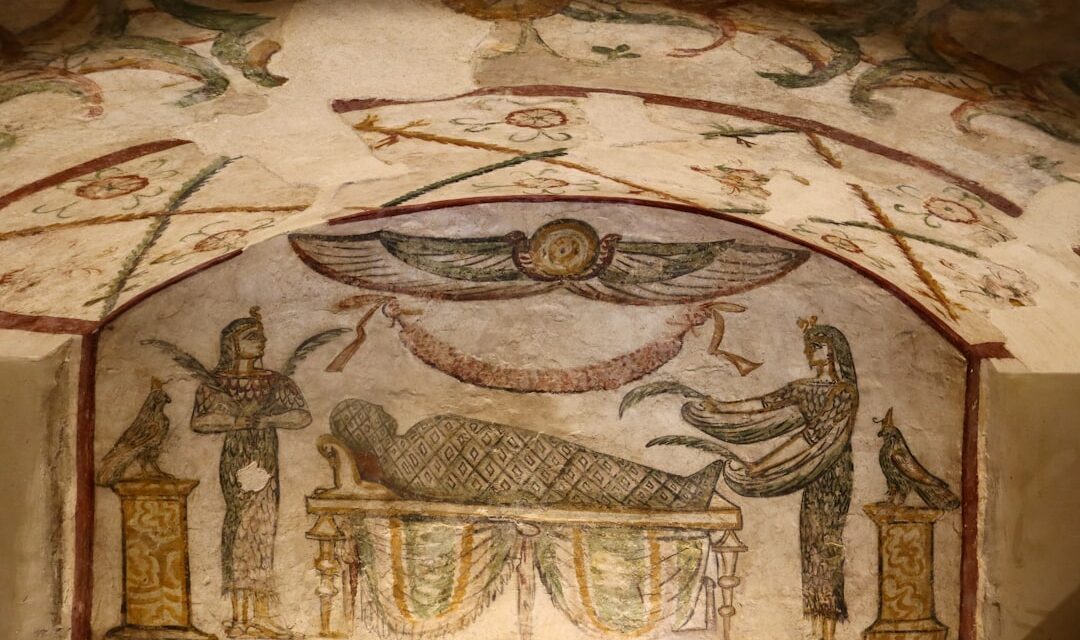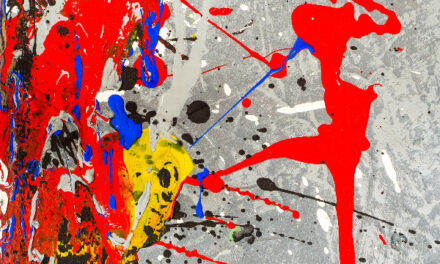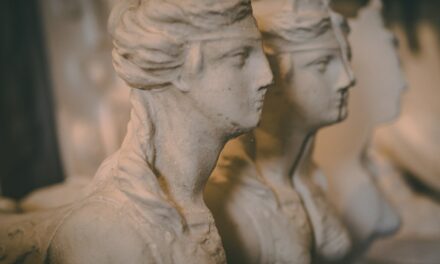Ancient Egyptian art boasts a rich and captivating history spanning over 5,000 years. Deeply rooted in the country’s religious and cultural beliefs, this art form played a crucial role in shaping ancient Egyptian society and identity. The earliest examples date back to the prehistoric period, with rock carvings and cave paintings depicting animals, hunting scenes and religious rituals.
As the civilisation evolved, so did their artistic techniques and styles, culminating in the creation of iconic works such as the Great Sphinx and the pyramids of Giza. The ancient Egyptians regarded art as a powerful tool for preserving their culture and communicating with the gods. They utilised art to portray their beliefs, rituals and daily life, as well as to honour their pharaohs and deities.
The natural environment heavily influenced ancient Egyptian art, with numerous artworks featuring depictions of animals, plants and landscapes. The use of hieroglyphics, a writing system employing pictures and symbols, also played a significant role in the development of Egyptian art, enabling artists to convey complex ideas and narratives through their work. In essence, ancient Egyptian art reflected the society’s profound spiritual beliefs, reverence for nature and the importance of preserving their cultural heritage.
Summary
- Ancient Egyptian art originated around 3000 BC and was influenced by religious and funerary practices.
- Art played a crucial role in Ancient Egyptian society, serving as a means of communication, religious expression, and a reflection of the afterlife.
- Ancient Egyptian artists used a variety of techniques and materials such as stone carving, painting, and pottery to create their art.
- Symbolism and meaning were integral to Ancient Egyptian art, with common motifs including the afterlife, gods and goddesses, and the pharaoh’s power.
- Ancient Egyptian art has had a significant influence on modern art, inspiring artists such as Pablo Picasso and Henry Moore.
The Role of Art in Ancient Egyptian Society
The Spiritual Significance of Art
The ancient Egyptians believed that art had the power to connect the physical world with the spiritual realm, and they used it to create elaborate tombs, temples, and statues that were intended to serve as eternal homes for the soul in the afterlife. These artworks were not only symbols of wealth and power but also served as a way for the living to communicate with the deceased and ensure their continued existence in the afterlife.
A Practical Role in Society
In addition to its religious significance, art also played a practical role in ancient Egyptian society. It was used to record historical events, document daily life, and convey important messages to the people. For example, the walls of temples and tombs were often adorned with intricate paintings and carvings that depicted scenes from mythology, historical events, and everyday life.
A Legacy for Future Generations
These artworks served as a form of visual storytelling, allowing future generations to learn about their history and cultural traditions. Overall, art was an integral part of ancient Egyptian society, serving as a means of preserving their cultural heritage, communicating with the divine, and documenting their history for future generations.
Techniques and Materials Used in Ancient Egyptian Art

Ancient Egyptian artists employed a variety of techniques and materials to create their iconic artworks. One of the most common materials used in ancient Egyptian art was limestone, which was readily available and easy to carve. Limestone was used to create statues, reliefs, and architectural elements such as columns and lintels.
Another popular material was granite, which was used for more durable sculptures and monuments. In addition to stone, ancient Egyptian artists also worked with metals such as copper and bronze to create jewellery, tools, and ceremonial objects. In terms of techniques, ancient Egyptian artists were skilled in the art of relief carving, which involved carving images into a flat surface to create a three-dimensional effect.
This technique was commonly used in temple walls and tombs to depict scenes from mythology, religious rituals, and daily life. Another important technique was painting, which was used to decorate tombs, temples, and statues with vibrant colours. The ancient Egyptians also developed advanced techniques for glassmaking, pottery, and jewellery making, creating intricate and beautiful objects that are still admired today.
Overall, the techniques and materials used in ancient Egyptian art were a testament to the skill and creativity of the artists who created them.
Symbolism and Meaning in Ancient Egyptian Art
Ancient Egyptian art was rich in symbolism and meaning, with every image and motif carrying deep significance. One of the most common symbols in ancient Egyptian art was the use of animals to represent various gods, goddesses, and mythical creatures. For example, the falcon was often associated with the god Horus, while the lion symbolized strength and power.
Plants and flowers were also used as symbols of rebirth and regeneration, reflecting the ancient Egyptians’ belief in the cycle of life and death. Another important aspect of ancient Egyptian art was the use of hieroglyphics to convey complex ideas and stories. Hieroglyphics were a form of writing that used pictures and symbols to represent words and sounds, allowing artists to incorporate written messages into their artwork.
This allowed for a deeper level of communication and meaning within their art, as well as serving as a way to preserve their cultural knowledge for future generations. Overall, symbolism played a crucial role in ancient Egyptian art, allowing artists to convey spiritual beliefs, historical events, and cultural traditions through their work.
The Influence of Ancient Egyptian Art on Modern Art
The art of ancient Egypt has had a profound influence on modern art and continues to inspire artists around the world. One of the most notable aspects of ancient Egyptian art that has influenced modern artists is its emphasis on symbolism and storytelling. Many contemporary artists have been inspired by the way ancient Egyptian artists used symbols and imagery to convey complex ideas and narratives within their work.
This has led to a resurgence of interest in symbolic art forms and a renewed appreciation for the power of visual storytelling. Another way in which ancient Egyptian art has influenced modern art is through its use of geometric shapes and patterns. The ancient Egyptians were skilled at creating intricate designs using simple geometric forms such as triangles, circles, and squares.
These patterns have been incorporated into modern art and design, influencing everything from architecture to fashion to graphic design. Additionally, the use of vibrant colours in ancient Egyptian art has also had an impact on modern artists, inspiring them to explore bold colour palettes and expressive use of colour in their work. Overall, the art of ancient Egypt continues to be a rich source of inspiration for contemporary artists, providing them with new ways of approaching symbolism, storytelling, design, and colour theory.
Notable Examples of Ancient Egyptian Art

The art of ancient Egypt is filled with iconic examples that continue to captivate audiences around the world. One of the most famous examples is the Great Sphinx of Giza, a colossal limestone statue with the body of a lion and the head of a pharaoh. The Sphinx is believed to have been built during the reign of Pharaoh Khafre around 2500 BC and is considered one of the greatest achievements of ancient Egyptian art and engineering.
Another notable example is the tomb paintings found in the Valley of the Kings, which depict scenes from mythology, religious rituals, and daily life. These paintings provide valuable insights into ancient Egyptian beliefs about the afterlife and their reverence for gods such as Osiris and Anubis. Additionally, the tomb paintings also showcase the skill and creativity of ancient Egyptian artists in capturing intricate details and vibrant colours within their work.
The bust of Nefertiti is another iconic example of ancient Egyptian art that continues to fascinate people around the world. This exquisite limestone bust depicts Queen Nefertiti with striking beauty and elegance, showcasing the mastery of ancient Egyptian sculptors in capturing lifelike representations of their subjects. Overall, these examples represent just a small fraction of the incredible artworks that have been preserved from ancient Egypt, each one providing valuable insights into their culture, beliefs, and artistic achievements.
Preservation and Conservation of Ancient Egyptian Art
Preserving and conserving ancient Egyptian art is an ongoing challenge that requires careful attention to detail and expertise in cultural heritage management. The harsh desert climate in Egypt poses significant risks to the preservation of ancient artefacts, leading to deterioration from exposure to sandstorms, humidity fluctuations, and pollution. In addition to environmental factors, human activities such as tourism and urban development also pose threats to the integrity of ancient sites and artefacts.
To address these challenges, conservation efforts are focused on implementing preventive measures such as controlling environmental conditions within museums and archaeological sites to minimise damage from humidity and temperature fluctuations. Additionally, advanced imaging technologies are being used to document artefacts in high resolution for research purposes while minimising physical handling. Conservation efforts also involve ongoing research into new methods for preserving ancient artefacts without compromising their integrity or historical significance.
This includes developing innovative techniques for cleaning artefacts without causing damage or altering their original appearance. In conclusion, preserving ancient Egyptian art requires a multi-faceted approach that combines scientific research with cultural sensitivity to ensure that these invaluable artefacts continue to be enjoyed by future generations.
If you are interested in learning more about different art movements, you may want to check out an article on Cubism. This avant-garde movement, pioneered by artists such as Pablo Picasso and Georges Braque, revolutionised the way art was perceived and created in the early 20th century. The article delves into the origins of Cubism, its key characteristics, and its lasting impact on the art world. Understanding different art movements can provide valuable context for appreciating Ancient Egyptian art and its place in the broader history of art.
FAQs
What is Ancient Egyptian art?
Ancient Egyptian art refers to the artistic expressions and creations of the ancient Egyptian civilization, which lasted for over 3,000 years. It includes a wide range of art forms such as paintings, sculptures, architecture, and decorative arts.
What are the main characteristics of Ancient Egyptian art?
Ancient Egyptian art is known for its emphasis on symbolism, symmetry, and a strict adherence to artistic conventions. It often depicted gods, pharaohs, and scenes from everyday life, with a focus on preserving the order and stability of the universe.
What materials were commonly used in Ancient Egyptian art?
Ancient Egyptian artists commonly used materials such as limestone, granite, basalt, and diorite for sculptures, while paintings were often created on papyrus or the walls of tombs and temples using natural pigments.
What were the main purposes of Ancient Egyptian art?
Ancient Egyptian art served various purposes, including religious and funerary practices, as well as conveying the power and authority of the pharaohs. It also aimed to preserve and perpetuate the order of the universe and the afterlife.
What are some famous examples of Ancient Egyptian art?
Famous examples of Ancient Egyptian art include the Great Sphinx of Giza, the pyramids of Giza, the bust of Nefertiti, the tomb paintings in the Valley of the Kings, and the hieroglyphic inscriptions on temple walls. These artworks provide valuable insights into the beliefs and practices of ancient Egyptian society.




